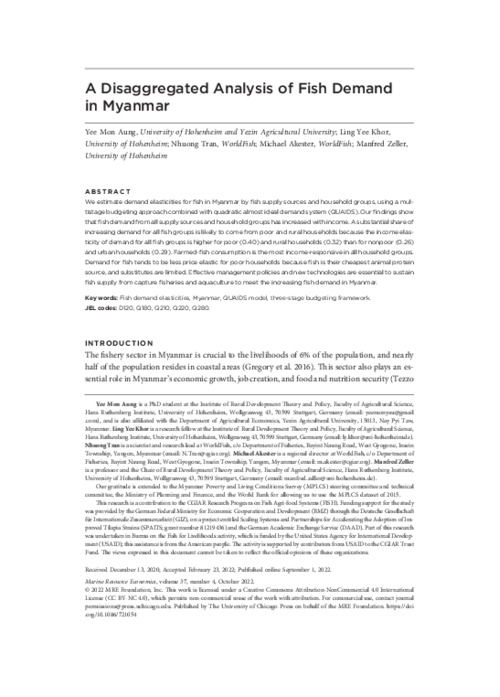A Disaggregated Analysis of Fish Demand in Myanmar

We estimate demand elasticities for fish in Myanmar by fish supply sources and household groups, using a multistage budgeting approach combined with quadratic almost ideal demand system (QUAIDS). Our findings show that fish demand from all supply sources and household groups has increased with income. A substantial share of increasing demand for all fish groups is likely to come from poor and rural households because the income elasticity of demand for all fish groups is higher for poor (0.40) and rural households (0.32) than for nonpoor (0.26) and urban households (0.29). Farmed-fish consumption is the most income-responsive in all household groups. Demand for fish tends to be less price elastic for poor households because fish is their cheapest animal protein source, and substitutes are limited. Effective management policies and new technologies are essential to sustain fish supply from capture fisheries and aquaculture to meet the increasing fish demand in Myanmar.
Permalink
Date Available
Type
Publisher
Countries
ISSN
0738-1360,2334-5985
Copyright
CC-BY-NC-4.0
Research Themes
Language